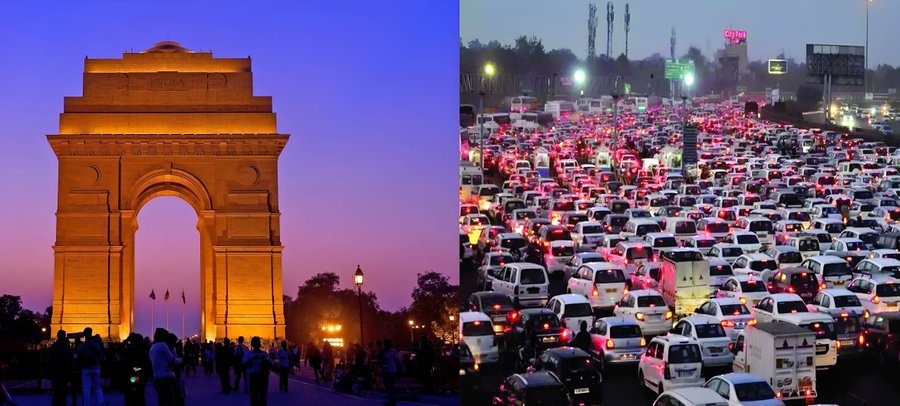Delhi Bans High-Emission Commercial Vehicles from November 1 to Curb Pollution

In a major policy move to combat its worsening air quality, Delhi has enforced a ban on high-emission commercial goods vehicles registered outside the city starting today. The order, issued by the Commission for Air Quality Management (CAQM), permits entry only to BS-VI compliant, CNG, LNG, or electric vehicles within the National Capital Territory (NCT).
This restriction applies across all categories — light, medium, and heavy goods vehicles (LGVs, MGVs, and HGVs) — that are registered outside Delhi and fail to meet Bharat Stage VI (BS-VI) norms or operate on cleaner fuels. Vehicles registered within Delhi are exempt from the ban.
However, the CAQM has provided a temporary reprieve for some operators. Commercial vehicles compliant with BS-IV standards will be allowed to enter the city until October 31, 2026, offering fleet owners additional time to upgrade to cleaner technology.
Tackling a Persistent Source of Pollution
Vehicular emissions have consistently ranked among the top contributors to Delhi’s poor air quality, particularly during the winter when low wind speeds and temperature inversions trap pollutants close to the ground. The latest directive forms part of Delhi’s Air Pollution Mitigation Plan 2025, which emphasises reducing vehicular emissions at their source.
According to environmental experts, heavy commercial vehicles entering from neighbouring states such as Haryana and Uttar Pradesh account for a substantial share of particulate matter (PM2.5) and nitrogen oxide (NOx) levels in the capital. By limiting entry to BS-VI and cleaner-fuel vehicles, authorities expect a measurable drop in emissions during the city’s most polluted months.
Impact on Transport and Logistics
The enforcement is expected to significantly reshape logistics and supply chains across the Delhi-NCR region. Non-compliant trucks will be barred from entry, potentially disrupting goods movement into the city.
Fleet operators are likely to face steep upgrade costs to transition to BS-VI or alternative fuel vehicles. Meanwhile, logistics firms with already compliant fleets stand to gain a competitive edge, positioning themselves as “Delhi-ready” or green logistics providers.
Experts also caution that even compliant vehicles may face temporary restrictions under Delhi’s Graded Response Action Plan (GRAP) during severe pollution episodes.
A Push for Sustainable Urban Mobility
While the transition may pose short-term challenges for transporters, policymakers and industry analysts see it as a vital step toward cleaner, sustainable logistics. For a city routinely ranked among the most polluted in the world, the CAQM’s directive underscores an urgent need for environmental accountability.
Businesses that swiftly adopt green logistics solutions will not only ensure compliance but also strengthen their foothold in one of India’s most environmentally regulated markets.
